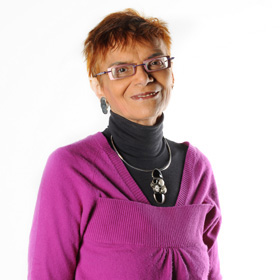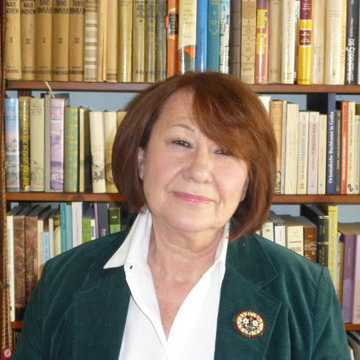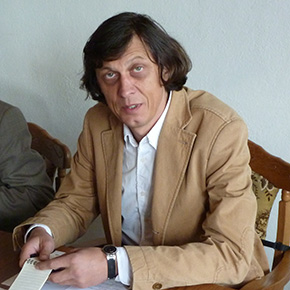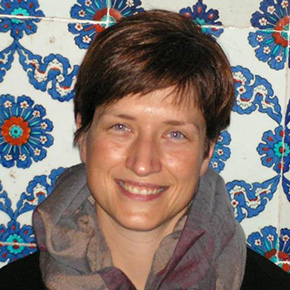 Keynote speaker:
Keynote speaker: prof. Suraiya Faroqhi
(Istanbul Bilgi University, Turkey) "In the year 1618: the city state of Dubrovnik, from the Ottoman perspective”
Prof. Suraiya Faroqhi, is considered to be the greatest authority in the field of Ottoman history. Educated at the universities of Hamburg, Istanbul and Bloomington (Indiana), Suraiya Faroqhi has taught English (1971-72) and history at Middle East Technical University, Ankara (1972-87) and served as a professor of Ottoman Studies at the Ludwig Maximilians Universität in Munich, Federal Republic of Germany (1988-2007). After retirement from LMU she now works as a professor at the Department of History, Istanbul Bilgi University in Istanbul.
In 2001-02, she was a Fellow at the Wissenschaftskolleg Berlin and in the spring of 2007, a Visiting Professor at Dartmouth College/New Hampshire. She holds an honorary doctorate from Boğaziçi University, Istanbul, and is an honorary member of the Middle East Studies Association and the Türk Tarih Kurumu. In 2014 she has been awarded the "WOCMES Award for Outstanding Contributions to Middle Eastern Studies 2014" by the "International Advisory Council of the World Congress for Middle Eastern Studies (WOCMES). She has held visiting appointments at Moscow State University, Al al-Bayt University/Jordan, the University of Minnesota, Boğaziçi University/Istanbul, and most recently (2012) the American University in Cairo.
Some of her articles have been reprinted in book form, most recently: “Travel and Artisans in the Ottoman Empire” (London: I. B. Tauris, 2014), “Another Mirror for Princes: The Public Image of the Sultans and its Reception” (Istanbul: The Isis Press, 2008). More or less recently she has edited 3rd volume of the “History of Turkey. The Later Ottoman Empire” (Cambridge: Cambridge University Press, 2006) and “Animals and People in the Ottoman Empire” (Istanbul: Eren, 2010). Second volume of the Cambridge History of Turkey, which she has co-edited together with Kate Fleet, has appeared in 2013, finally completing the scheduled 4-volume series.
 dr Daniela Sogliani
dr Daniela Sogliani (Centro Internazionale d’Arte e di Cultura di Palazzo Te in Mantua, Italy) “The Gonzaga and the Ottomans in the documents of the State Archive of Mantua from Renaissance to early 17th century”
SUMMARY
The State Archive of Mantua keeps the documents of the Gonzaga family, which ruled the town from 1328 to 1707. Their relationship with the Ottomans, which was mainly aimed at the purchase of horses, is testified by a set of epistolary correspondence, dowry agreements and notarial inventories. The relationship between Mantua and Jerusalem is attested from the middle of the 13th century by the presence of the Templars. The Basilica of Saint Andrew by Leon Battista Alberti preserves the so-called Most Precious Blood of Christ, a relic that marks a direct relationship with the Holy Land. At the middle of the 15th century, Ludovico II Gonzaga, Marquis of Mantua, known as the Turk, convened the diet of Pope Pio II Piccolomini in the town of Mantua for the crusade against the Ottomans. In the second half of the same century, Isabella d’Este collected objects from Eastern countries and her husband Federico II Gonzaga was in contact with Sultan Bayezid II, who in 1492 gave him a turban as a gift.
The lecture by the Scientific Director of the “Banche Dati Gonzaga” will discover the relationships between the Gonzaga Dukes from Mantua with the Sublime Port in Istanbul through the 15th and 16th centuries.
Daniela Sogliani took a degree in History of Art at Padua University discussing a dissertation on early 16th century Mantuan art and since 1995 she has been working at the Centro Internazionale d’Arte e di Cultura di Palazzo Te (www.centropalazzote.it), an institution that organises exhibitions and cultural events. Today she is responsible for the organisation of art exhibitions. From 1998 to 2002, she worked as a researcher within the research group “Collezionismo gonzaghesco 1563-1630” for the exhibition La Celeste galeria, the most important exhibition event held in Mantua in the last 25 years. She dealt with 16th century art with an exhibition dedicated to “Andrea Mantegna”, curated in collaboration with Rodolfo Signorini (Casa del Mantegna, 2006), as well as with 19th century art with the exhibition “La Nazione dipinta”, dedicated to Italian Risorgimento, curated in collaboration with Maurizio Bertolotti (Palazzo Te, 2007), and she personally curated the exhibition “La battaglia di Solferino e San Martino. Arte, storia e mito” (Desenzano del Garda, 2009). She established international collaborations, such as the exhibition “La morte di Raffaello. Storia di un dipinto di Felice Schiavoni” (Palazzo Te, 200) with Larisa Bardovskaja from Carskoe Selo Museum in Pushkin. In 2012 she took part in the curatorial works for the exhibition “Dipinti, sculture e disegni del Novecento. Esperienze di collezionismo nelle raccolte della Banca Monte dei Paschi di Siena e della Fondazione Banca Agricola Mantovana” (Palazzo Te). She published articles on Italian art magazines as well as research essays on the Gonzaga family.
Since 2013, she is the Scientific Director of the “Banche Dati Gonzaga” portal (http://banchedatigonzaga.centropalazzote.it/portale), which publishes online information, documents and texts on the history and culture of the Mantuan family.
 dr Hedda Reindl-Kiel
dr Hedda Reindl-Kiel (Bonn Uniwersity, Germany) "Ottoman Diplomatic Gifts to the Christian West"
SUMMARY
The Ottoman practice of sending diplomatic gifts had a highly symbolic quality from an early time on. They were not considered to be presents from country to country, but from monarch to monarch, accordingly taking into account differences of rank. This was connected with an understanding of gifts either as a tribute to a superior or as a kind of favour granted to an inferior. The range of objects was limited, although supposed predilections of the recipient were generally taken into consideration. Usually, textiles, carpets, jewellery and animals (especially horses) with their trappings were dispatched. The impact of these gifts on Western European art was largely indirect; they appear mainly as exotic attributes on paintings. The Ottoman influence on textiles (especially in Venice and Poland) was due to intensive trade relations, while the impact on armaments was a more complicated process, rooted in the actual fighting of wars.
Hedda Reindl-Kiel studied at the universities of Munich and Istanbul, focusing on Ottoman and South-eastern European history as well as Mongolian studies. In 1979 she obtained her Ph. D. from Munich University.
From 1984 until her retirement in 2012 she has been teaching at the Institute of Middle Eastern and Asian Studies of the University of Bonn/Germany, where she headed the Turkish division. In 2013-2014 she was a senior fellow at the Research Center for Anatolian Civilizations, Koç University, Istanbul.
Her research interest is the history of Ottoman culture, particularly material culture. She is especially concerned with the Ottoman system of gift exchanges and has widely published on this subject.
 dr Radu Păun
dr Radu Păun(Centre National de la Recherche Scientifique / École des Hautes Études en Sciences Sociales) "Conquered by the (s)word: Governing the tributary principalities of Wallachia and Moldavia (16th-17th centuries)"
SUMMARY
Situated on the Northern borders of the Empire, the tributary principalities of Wallachia and Moldavia played the role of contact zones between Ottoman world and Christian Europe, and thereby represent a revealing example of how Ottomans and locals understood and shaped their mutual relationship.
This relationship should be seen as a process of continuous exchange and cultural transfer in which both sides played specific roles. Some examples will convincingly illustrate this idea; among them special emphasis will be put on the appointment of the tributary princes and the practice of petitioning to the sultan by the Moldo-Wallachian political elites.
Radu G. Păun is currently chargé de recherche at the Centre d’Études des Mondes Russe, Caucasien et Centre-Européen (Centre National de la Recherche Scientifique / École des Hautes Études en Sciences Sociales), Paris. His main fields of research cover the history of Greco-Romanian political elites during the Ottoman era (16th–18th centuries) and the relations between the Ottoman world and Christian Europe.
He is Section Editor for South-Eastern Europe in the project Christian-Muslim Relations to 1900, coordinated by the University of Birmingham.
Recent publications include “Enemies within. Networks of Influence and the Military Revolts against the Ottoman Power (Moldavia and Wallachia, Sixteenth — Seventeenth Centuries)”, in the volume “The European Tributary States of the Ottoman Empire in the Sixteenth and Seventeenth Centuries”, edited by Gábor Kármán and Lovro Kunčević, Leiden/Boston, Brill 2013. He co-directed with Gábor Kármán the book “Europe and the ‘Ottoman world’: Exchanges and Conflicts (Sixteenth to Seventeenth Centuries)”, Istanbul / Isis 2013.
 Dr Emese Pásztor
Dr Emese Pásztor (Budapest Museum of Applied Arts, Hungary) “Ottoman Turkish Textiles in Christian Churches – with special regard to the Kingdom of Hungary and Transylvania in the 16–17th centuries”
SUMMARY
By means of trading, diplomatic gift and war booty several valuable Ottoman Turkish textiles came to Eastern and Central Europe during the 16–17th centuries. Due to their high value, or because they symbolize military glory, these expensive silk fabrics, attires, horse equipment covered with textiles and carpets, survived – beside the royal and aristocratic treasuries – in ecclesiastical properties. From among them several pieces are now kept in museums. The aim of the lecture is to give a short introduction into the history of the ecclesiastical textiles of Ottoman origin used in Catholic, Protestant and Orthodox churches; to compare their original and new ecclesiastical function, furthermore to restrict the topic to the territory of Royal Hungary and Transylvania and to introduce the preserved art objects from this area.
Emese Pásztor is art historian, curator at the Budapest Museum of Applied Arts. She took her first degree (M.A.) in history and art history at the Eötvös Loránd University in Budapest (ELTE) in 1983; the post-graduate degree (Ph.D.) in history (Ottoman-Turkish history) at the Eötvös Loránd University in Budapest (ELTE) in 2002.
Between 1983 and 1998 she worked as Assistant Curator at the Textiles Department of the Budapest Museum of Applied Arts. Since 1998 she has been working as Head of the Textiles Department. Between 1986 and 2012 she was visiting lecturer in the history of textiles at the Hungarian University of Art and Design (MOME), Budapest; since 1990 she has been visiting lecturer in the history of textiles at the Hungarian Academy of Fine Arts, Budapest. Her special field of research is Ottoman-Turkish textiles in Transylvania and Royal Hungary during the sixteenth and seventeenth centuries. Most of her publications are on the subject of Ottoman textiles.
dr Beata Biedrońska-Słota
(Krakow, Poland) "The place of Ottoman art in the image of Polish art during the Renaissance"
SUMMARY
Relation between the Polish-Lithuanian Commonwealth and the Ottoman Empire in 16th century were beneficial for both sides. Trade with the Ottoman Empire provided the upper spheres of the Commonwealth with luxury goods and at the same time it shaped tastes of Polish nobles.
In consequence, influence of Turkish art is present in Polish art in the period when the Italian Renaissance reigned in Poland. This influence is perceptible, among others, in the custom of decorating interiors with Turkish textiles, in dresses of persons shown on paintings from the epoch and in the form of the Polish kontusz costume of the time.
Dr Beata Biedrońska-Słota, art historian, qualified museum custodian, a longtime Head of the Textile Department in the National Museum in Krakow. She received her Ph. D. in 1985 based on work “Persian rugs, so called Polish. Study on the fiber and the meaning of the ornament in the Islamic Art”. She was a scholarship holder twice for the Lanckoroński Foundation.
She’s an author of numerous exhibitions, i.e.: “Orient in the Polish art” (Krakow 1992), “Polish Armenians. Independence and integration” (Krakow 2000), “With fashion through the centuries” (Krakow 2003), “Sarmatism. A Dream of power” (Krakow 2010), “Golden Age of the Polish Republic” (Madrit 2011).
She is renowned specialist for Oriental textiles. She is publishing her texts in, and outside of Poland: “Carpets and Textiles in the Iranian World 1400-1700”, Oxford 2010; “Persian Art. From Polish Collections”, Teheran 2013; “Distant Neighbour Close Memories. 600 Years of Turkish – Polish Relations”, Istanbul 2014; was editor of „Kobierce anatolijskie z kolekcji Muzeum Narodowego Brukenthala w Sibiu” (Anatolian rugs from the collection of the Brukenthal National Museum in Sibiu), Gdańsk 2013.
 dr Suat Alp
dr Suat Alp (Hacettepe University in Ankara, Turkey) The Problematic of Interaction with the Islamic Orient as Reflected in Polish Art and Culture”
SUMMARY
Poland’s relationship with Islamic Orient has a rich background and it is easy for us to see the traces of impact and interaction of this relation especially during the Polish-Lithuanian Commonwealth. Poland’s relationship with Islamic oriental art and culture during this period presents different processes of reception, adoption and adaptation which still keeps lots of interesting parts inside. The level and the frequency of interaction with the Islamic orient in Poland was clearly different from any other part of Europe.
Objects of applied art from Islamic cultures were so favourable for the aesthetic tastes of Polish gentry and society during the reign of Polish-Lithuanian Commonwealth. There was a noticeable increase in the amount of imported goods from Islamic cultures and also local productions of these Orient inspired objects were flourishing in Poland.
In this context, dealing with the problematics of interaction, this study would like to ask basic “5W1H” questions in scope of the subject. Just in search of the problematics, the aim is to ask; “What happened?”, “Where did it take place?”, When did it take place?”, “Who did that?”, “Why did that happen?” and “How did it happen?”
Researches about Poland’s cultural and artistic contacts with Islamic cultures started as early as the second half of nineteenth century. Thanks to these studies lots of answers are being given easily to these questions. But first, just to be able to see the big picture and secondly, to be able to find out more causality between these discussions, it can be very efficient for us to ask these questions within an articulated context.
When questioning about “what happened?”, the aim is to clarify the traces of interaction with some characteristic examples. The question, “Where did it take place?” will bring us some answers about not only geographical locations for cultural encounters but also about the routes of trade and contact zones of cultures even when during the war times. The question, “when did it take place” will take us to the historical context of the subject, and we will be able to discuss about the dates which could be estimated as important turning points. The question of “Who did that?” will give us a chance to discuss about the actors of this process. Kings, Sultans, Shahs, merchants, ambassadors, artists, the gentry of Commonwealth, the artists of the Islamic orient and the workshops in Poland. Finally, the questions, “why did it happen?” and “How did it happen” will be discussed together and maybe will be the most challenging parts of this study. Especially when discussing these together, we will be able to see the relations between causes and results within this process. The phenomenon of Sarmatism will show us a path through the stylistic eclecticism and hybridity of the ornamental repertoire of this period.
When trying to visualise the big picture of this period’s encounters with the Islamic orient, we will find most of the answers within Poland. Possibly, the questions will take us to a conclusion that “Poles had their own reasons”
Dr Suat ALP, is currently working as Assistant Prof. Dr. in the Department of Art History at Hacettepe University where he received his Ph. D. in 2003 based on work “Metalwork in the Balkans During the Ottoman Period”. His research interest focuses on Ottoman material cultural heritage in eastern and south-eastern Europe (15th–18th centuries) and the relations between the Turkish-Islamic art and Christian Europe. In context of his researches, he studied in several Balkan countries and began his post-doc studies in 2014 about the Ottoman material cultural heritage in Poland and its cultural reflections.
 dr Pál Ács
dr Pál Ács(Research Centre for the Humanities of Hungarian Academy of Sciences, Hungary) “The Changing Image Of Ottoman Turks In East-Central European Renaissance Literature”
SUMMARY
The first part of the lecture deals the religious, political and ideological background of the “antiturcica” literature, representing the dark and formidable face of the Ottoman Turk. The second part deals a very slow and contradictory process, in which this gloomy portrait transformed into a sympathetic, almost friendly image of Turk, aspiring to scholarly cognition of the state, lifestyle, culture, language and literature of the Ottoman Empire. Author examines the religious and ideological background of the image of “Good Turk”. In his research he is relying on the original works written by Hungarian, Ottoman, Austrian, German and Polish humanists and vernacular Renaissance authors.
Pál Ács is a senior fellow of Research Centre for the Humanities of Hungarian Academy of Sciences. He is an Honorary Professor of the Eötvös Loránd University, Budapest and editor of the Magyar Könyvszemle (Hungarian Book Review). His research focuses on Hungarian and European literature and intellectual history of the early modern era, among others on the relationship between the Christian world and Islam. He has been a participant of research projects in Oxford, Leiden, Leipzig, Vienna, Copenhagen and Paris. He is an author of three books in Hungarian and number of international publications.
prof. Ewa Siemieniec-Gołaś
(Jagiellonian University, Krakow, Poland) "Descriptions of Ottoman Turkish professions and posts in the texts of Old Polish literature"
SUMMARY
As the result of more vivid contacts between Ottoman Turkey and Poland in Old Polish literature, beginning from the sixteenth century, some literary works concerning with Turkish subject matter appeared. It is difficult to estimate how big and numerous this group of literature is because still there is no any bibliographic study taking a broad view of those works. However one should ascertain, that the works presenting Turkish subject matter are very various in terms of their character. Thus, among them there are memoirs, letters, descriptions of Turkish state, reports from travels and legations, versified descriptions of military actions. The authors of those works when writing about some Turkish realities inserted in the texts their Turkish names transcribed in Latin alphabet. Among this Turkish lexical material there were words denoting names of professions and posts performed in Ottoman Turkey. This very matter constitutes the subject of the presentation. The works of Old Polish literature discussing Turkish subject matter affords quite comprehensive material for scientific research on the mentioned subject both for the historians and the onomastic linguists.
Prof. dr hab. Ewa Siemieniec-Gołaś, humanities professor, linguist, head of the Chair in Turkish Studies in the Institute of Oriental Studies of the Jagiellonian University. Her research domain is historical linguistics, Ottoman-Turkish language and one of the Turkic languages – Karachay-Balkar. As a scientific researcher she was cooperating with many institutions outside of Poland: Centre national de la recherche scientifique in Paris, with Universities in Lausanne, Vilnus, Ankara and Konyi (Turkey), Uppsala, Gottingen, Meinz. Aa a university teacher she was a lecturer on universities of Urban-Champaign (USA), Bochun (Germany), Szeged (Hungary), Naples (Italy), Ankara and Konya (Turkey), Vilnus (Lithuania). She’s a member of number of scientific associations and organizations, i.e. Societas Uralo-Altaica, Polish Society of Linguistics, Polish Oriental Society, Polish Academy of Science (Orientalist Commision and Orientalist Science Commission).
 dr Natalia Królikowska
dr Natalia Królikowska(Warsaw University, Poland) "Between fear, contempt and fascination – the Ottoman Empire in Polish Renaissance writing"
SUMMARY
This paper studies the conception of the Ottoman Empire in the literary, political and prophetic writings of Renaissance Poland-Lithuania. It focusses on the diverging ways in which the Turks were described in these sources. It explores the reasons of constructing different images of the Ottomans by various authors. It aims also to discuss the Polish-Lithuanian writings in the perspective of the Polish-Ottoman diplomatic relations in the 16th century.
Natalia Królikowska is Warsaw University lecturer, specialized in the history of the Black Sea region in early modern era. She studied history and turkology in Warsaw, where she received her Ph. D. in 2010 prepared under the direction of prof. Dariusz Kołodziejczyk on the history of Crimean Chanat („Law and Division of Power. A Study on the Reign of Murad Giray”, 2010). Her publications are, amongst the others: "Crimean Crime Stories. Homicide and Bodily Harm Cases During the Reign of Murad Giray (1678-1683)", in: "The Early Modern Crimean Khanate Between East and West", ed. D. Klein, Wiesbaden: Harrassowitz Verlag, 2012; "Sovereignty and Subordination in Tatar-Ottoman Relations”, in: “The European Tributary States of the Ottoman Empire in the Sixteenth and Seventeenth Centuries", ed. G. Kármán, L. Kunčević, Leiden-Boston: Brill, 2013; "The Law Factor in Ottoman-Crimean Tatar Relations in the Early Modern Period”, in: “Law and Empire. Ideas, Practices, Actors", ed. J. Duindam et alia, Leiden-Boston: Brill, 2013.
dr Julia Krajcarz
(Jagiellonian Library, Krakow, Poland) “The Ottoman Religious Customs and Mosques as Represented in the Selected Old-Polish Texts From the 16th and 17th Centuries”
SUMMARY
Paper presents the descriptions of the Ottoman mosques, taken from the selected Old-Polish texts from the 16th and the first half of 17th century. The question of the Ottomans, and also the Islam, appeared in the Polish literature, publicistic, religious, propaganda or fiction ones of that time because of the threat of the further pressure and march of the Ottoman army into Europe and the potential conquest of the next lands. Although the formal political relation between the Kingdom of Poland and the Ottoman Porte were assigned by the peace treaty, the real or imagined threat had a reflection in texts preserved from that time. The Ottomans were mainly but not only described as the barbarians and – first of all – infidels. Important part of the Polish literature touching on the Ottoman question at the mentioned time were descriptions of the mosques. They were described as buildings arousing on the one hand the contempt, as the places of non-Christian, pagan cult, and on the other hand – admiration – because of their architectural beauty.
Julia A. Krajcarz is a turkologist and orientalist. Doctor of Humanities, works at the Jagiellonian Library and at the Chair in Turkish Studies, Institute of Oriental Studies of the Jagiellonian University.
